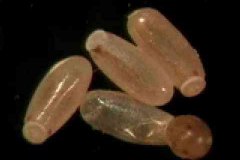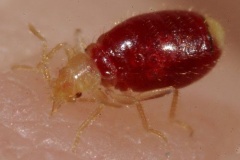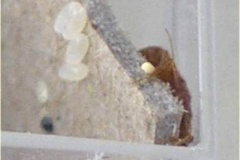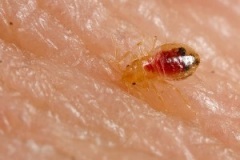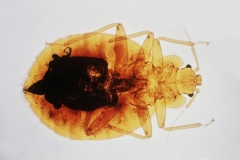Categories
- Bed Bug
- Bed Bug Cream
- BED BUG DATABASE
- Bed Bug Home Remedies
- Bed Bug Oil
- Bed Bug Remedies
- Bed Bug Spray
- Bed Bugs New York
- Bed Bugs Vancouver
- Bed Bugs World
- Bed Bugs American Samoa
- Bed Bugs Canada
- Bed Bugs Guam
- Bed Bugs North Mariana islands
- Bed Bugs Puerto Rico
- Bed Bugs United States
- Bed Bugs Alabama
- Bed Bugs Alaska
- Bed Bugs Arizona
- Bed Bugs Arkansas
- Bed Bugs California
- Bed Bugs Colorado
- Bed Bugs Connecticut
- Bed Bugs Delaware
- Bed Bugs Florida
- Bed Bugs Georgia
- Bed Bugs Hawaii
- Bed Bugs Idaho
- Bed Bugs Illinois
- Bed Bugs Indiana
- Bed Bugs Iowa
- Bed Bugs Kansas
- Bed Bugs Kentucky
- Bed Bugs Louisiana
- Bed Bugs Maine
- Bed Bugs Maryland
- Bed Bugs Massachusetts
- Bed Bugs Michigan
- Bed Bugs Minnesota
- Bed Bugs Mississippi
- Bed Bugs Missouri
- Bed Bugs Montana
- Bed Bugs Nebraska
- Bed Bugs Nevada
- Bed Bugs New Hampshire
- Bed Bugs New Jersey
- Bed Bugs New Mexico
- Bed Bugs New York
- Bed Bugs North Carolina
- Bed Bugs North Dakota
- Bed Bugs Ohio
- Bed Bugs Oklahoma
- Bed Bugs Oregon
- Bed Bugs Pennsylvania
- Bed Bugs Rhode Island
- Bed Bugs South Carolina
- Bed Bugs South Dakota
- Bed Bugs Tennessee
- Bed Bugs Texas
- Bed Bugs Utah
- Bed Bugs Vermont
- Bed Bugs Virgin Islands
- Bed Bugs Virginia
- Bed Bugs Washington
- Bed Bugs Washington DC
- Bed Bugs West Virginia
- Bed Bugs Wisconsin
- Bed Bugs Wyoming
- BedBug Removal
- BedBugs in Michigan
- Canada Bed Bugs
- Do it yourself Bed Bug
- Exterminator Bed Bugs
- Health
- Pest Inspection
- Toronto Bed Bugs
- Welcome to Bed Bugs
Registry Sites List
- Bronx Bed Bug Registry Infestation Maps, Residential And Hotel
- Brooklyn Bed Bug Registry Infestation Maps, Residential And Hotel
- Manhattan Bed Bug Registry Infestation Maps, Residential And Hotel
- Nyc Bed Bug Registry Infestation Maps, Residential And Hotel
- Queens Bed Bug Registry Infestation Maps, Residential And Hotel
- Staten Island Bed Bug Registry Infestation Maps, Residential And Hotel
Recommended Sites
Daily Archives: February 4, 2015
News Links:
Ohio State University Extension Fact Sheet: Bed Bugs
1991 Kenny Road, Columbus, OH 43210 HYG-2105-04
Susan C. Jones, Ph.D., Assistant Professor of Entomology Extension Specialist, Household & Structural Pests
Bed bugs are parasites that preferentially feed on humans. If people aren't available, they instead will feed on other warm-blooded animals, including birds, rodents, bats, and pets.
Bed bugs have been documented as pests since the 17th century. They were introduced into our country by the early colonists. Bed bugs were common in the United States prior to World War II, after which time widespread use of synthetic insecticides such as DDT greatly reduced their numbers. Improvements in household and personal cleanliness as well as increased regulation of the used furniture market also likely contributed to their reduced pest status.
In the past decade, bed bugs have begun making a comeback across the United States, although they are not considered to be a major pest. The widespread use of baits rather than insecticide sprays for ant and cockroach control is a factor that has been implicated in their return. Bed bugs are blood feeders that do not feed on ant and cockroach baits. International travel and commerce are thought to facilitate the spread of these insect hitchhikers, because eggs, young, and adult bed bugs are readily transported in luggage, clothing, bedding, and furniture. Bed bugs can infest airplanes, ships, trains, and buses. Bed bugs are most frequently found in dwellings with a high rate of occupant turnover, such as hotels, motels, hostels, dormitories, shelters, apartment complexes, tenements, and prisons. Such infestations usually are not a reflection of poor hygiene or bad housekeeping.
Bed bugs are fairly cosmopolitan. Cimex lectularius is most frequently found in the northern temperate climates of North America, Europe, and Central Asia, although it occurs sporadically in southern temperate regions. The tropical bed bug, C. hemipterus, is adapted for semitropical to tropical climates and is widespread in the warmer areas of Africa, Asia, and the tropics of North America and South America. In the United States, C. hemipterus occurs in Florida.
Adult bed bugs are brown to reddish-brown, oval-shaped, flattened, and about 3/16 to 1/5 inch long. Their flat shape enables them to readily hide in cracks and crevices. The body becomes more elongate, swollen, and dark red after a blood meal. Bed bugs have a beaklike piercing-sucking mouthpart system. The adults have small, stubby, nonfunctional wing pads. Newly hatched nymphs are nearly colorless, becoming brownish as they mature. Nymphs have the general appearance of adults. Eggs are white and about 1/32 inch long.
Bed bugs superficially resemble a number of closely related insects (family Cimicidae), such as bat bugs (Cimex adjunctus), chimney swift bugs (Cimexopsis spp.), and swallow bugs (Oeciacus spp.). A microscope is needed to examine the insect for distinguishing characteristics, which often requires the skills of an entomologist. In Ohio, bat bugs are far more common than bed bugs.
Female bed bugs lay from one to twelve eggs per day, and the eggs are deposited on rough surfaces or in crack and crevices. The eggs are coated with a sticky substance so they adhere to the substrate. Eggs hatch in 6 to 17 days, and nymphs can immediately begin to feed. They require a blood meal in order to molt. Bed bugs reach maturity after five molts. Developmental time (egg to adult) is affected by temperature and takes about 21 days at 86 F to 120 days at 65 F. The nymphal period is greatly prolonged when food is scarce. Nymphs and adults can live for several months without food. The adult's lifespan may encompass 12-18 months. Three or more generations can occur each year.
Bed bugs are fast moving insects that are nocturnal blood-feeders. They feed mostly at night when their host is asleep. After using their sharp beak to pierce the skin of a host, they inject a salivary fluid containing an anticoagulant that helps them obtain blood. Nymphs may become engorged with blood within three minutes, whereas a full-grown bed bug usually feeds for ten to fifteen minutes. They then crawl away to a hiding place to digest the meal. When hungry, bed bugs again search for a host.
Read the rest here:
Ohio State University Extension Fact Sheet: Bed Bugs
Posted in Bed Bugs Ohio
Comments Off on Ohio State University Extension Fact Sheet: Bed Bugs
University of Maryland Professor on Preventing Bed Bugs …
NEWSLETTERS Receive the latest local updates in your inbox
Though your first instinct after traveling may be to unpack and put your belongings away, a University of Maryland entomologist suggests tossing your clothes in the dryer to prevent bed bugs from making your bed their new home. News4's Shomari Stone reports. (Published Tuesday, Feb 3, 2015)
Updated at 11:30 PM EST on Tuesday, Feb 3, 2015
Though your first instinct after traveling may be to unpack and put your belongings away, a University of Maryland entomologist suggests tossing your clothes in the dryer to prevent bed bugs from making your bed their new home.
A new international study found the bed bugs who bite humans evolved from bugs who fed on bats 250,000 years ago.
"Bed bugs are becoming resistant to some of our most potent insecticides," Michael Raupp, a professor at University of Maryland, said.
Raupp added the spread of bed bugs is also due to globalization, used furniture sales and international travel.
"People are moving around more and they're coming in contact with bed bugs in different places," Raupp said.
If you want to make sure you're not bringing any bugs home, the first thing you should do after a trip is place your clothes in the dryer on medium heat for about 30 minutes.
"It's going to kill every living stage of a bed bug," Raupp said.
Follow this link:
University of Maryland Professor on Preventing Bed Bugs ...
Posted in Bed Bugs Maryland
Comments Off on University of Maryland Professor on Preventing Bed Bugs …

 Residence
Residence  Location
Location 

